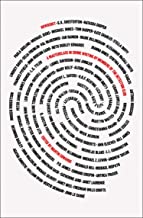In Howdunit, published by Collins Crime Club, ninety leading crime novelists offer personal insights into how they write their mysteries – and much more besides. Any would-be crime writer will find countless valuable insights here, but the over-riding aim is to entertain and inform anyone who enjoys crime fiction. And perhaps even some people who don’t regard themselves as crime fans (at least, not yet) but who are fascinated by the way authors work.
Each contributor is a past or present member of the Detection Club, the world’s oldest social network of crime writers. Over the past ninety years, many of the most successful authors in the genre including spy, thriller, and adventure fiction, as well as traditional detective stories and novels of psychological suspense have belonged to the Club. So the roster for Howdunit features such legendary names as Agatha Christie, Dorothy L. Sayers, and G.K. Chesterton, as well as superstars of today including John Le Carre, Alexander McCall Smith, Ian Rankin, Mark Billingham, Val McDermid, Ann Cleeves, Elly Griffiths, and Sophie Hannah.

We decided to dedicate Howdunit to Len Deighton, our longest-serving member, as a way of celebrating the golden anniversary of his election to the Club. As for the guiding concept of the book, Felix Francis summed it up as: ‘How wedunit’. In other words, we’d talk about our own experiences, expressing personal views rather than laying down earnest ‘rules’. The Club’s publishers, HarperCollins, loved the idea, and in the months that followed, Howdunit took shape.
The result is not a textbook, but a treasure trove of wit, wisdom, and anecdotes. Readers will find out here which author was the first novelist to use a word processor, who wrote what has been described as the first ‘electronic novel’, how a Booker Prize nomination led to a commission to revive a great detective of the Golden Age, and a good deal more. There is even a step-by-step case study in correspondence of the making of a collaborative crime classic which illustrates that the creative process is an extraordinary mixture of joy and pain.
I suggested broad topics that members might like to write about, and offered more detailed ideas to anyone who asked for them, but I didn’t try to impose conformity of approach or message or to eliminate contradictions. I wanted contributors to express themselves without feeling constrained by editorial diktats. When you are lucky enough to have the chance to work with such a gifted group of authors, it would be crazy not to give them free rein. The genre is a broad church, encompassing so many types of story, and it would be strange if all crime writers had same opinions or went about their task in the same way. As will become evident, they don’t! The contributors have diverse opinions about everything from ‘writer’s block’ to the crime writer’s mission.
Some writers plot or outline in advance before writing the first word of a story, while others write from the seat of their pants, setting off on the journey of novel writing without having the faintest idea of where it will take them. Both approaches are explored in Howdunit, along with many other areas where there is room for divergent attitudes and approaches. To suggest that one view is invariably ‘right’ and another is ‘wrong’ is naive. Just as different criminals favour different m.o.s, so different crime novelists follow different paths when creating their mysteries. They also favour different types of crime fiction; Howdunit highlights aims to show the rich potential of the genre.
The value of the personal views expressed by contributors lies in the way they illuminate the pros and cons, the choices that any writer needs to make. We don’t offer the false comfort of definitive answers where none exist, although there are also areas of widespread consensus – for instance, that writers with fertile imaginations can find ideas anywhere. The question for any individual writer is ultimately: what works for you?
When I first mooted the concept of Howdunit, I envisaged a collection of perhaps twenty pieces. The book is a fund-raiser for the Detection Club, so all the contributions have been donated by the authors, and by the estates or agents of the deceased members. Their enthusiasm for the project, and their generosity, took my breath away. I’m delighted with the result, and I’m optimistic that readers will be just as fascinated, just as thrilled.
© Martin Edwards, September 2020
HOWDUNIT
Edited by Martin Edwards
ISBN-13
9780008380137
Format
Hardback,
Publishers
: HarperCollins, Collins Crime Club
Publication date
17 Sep 2020